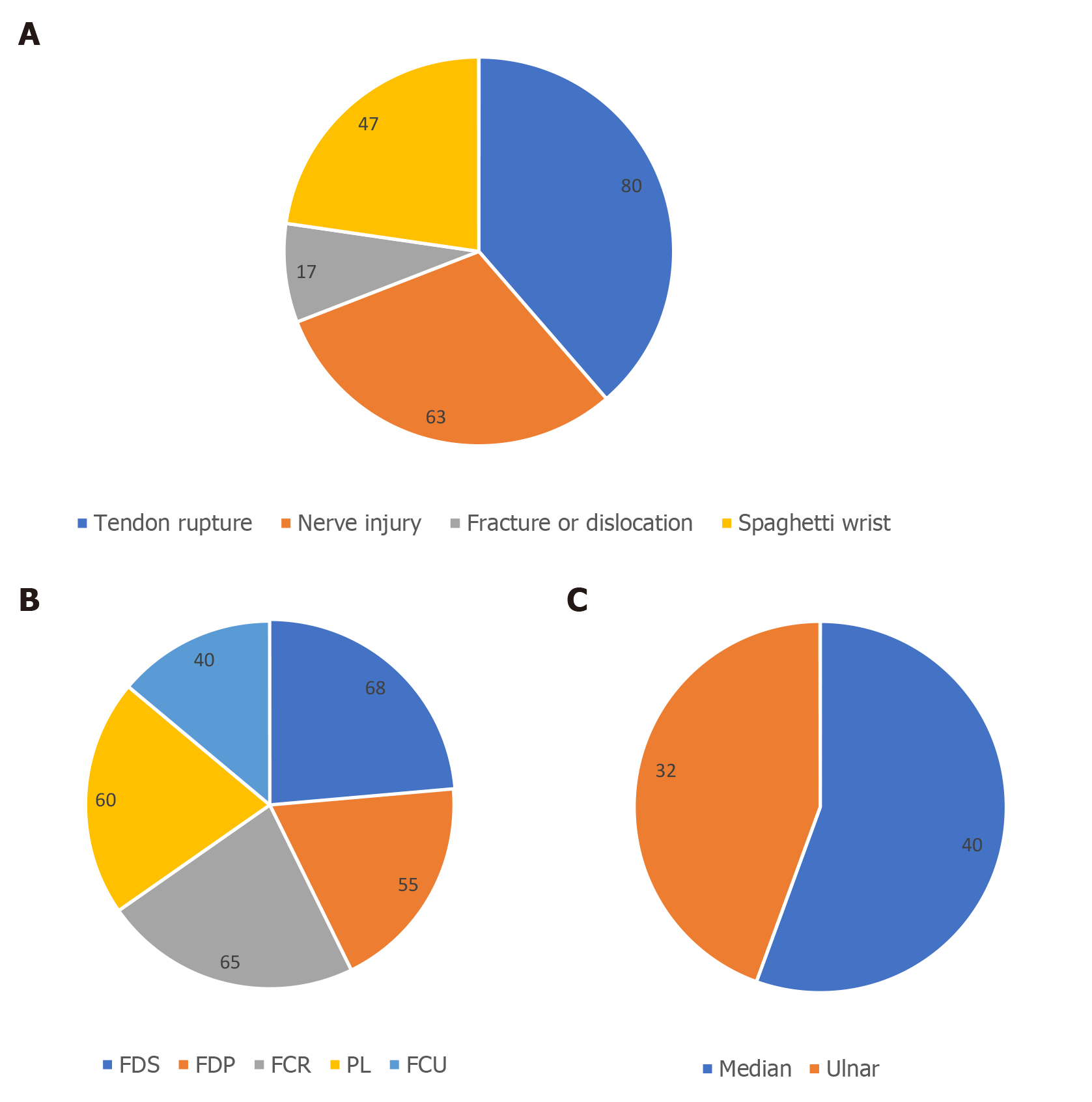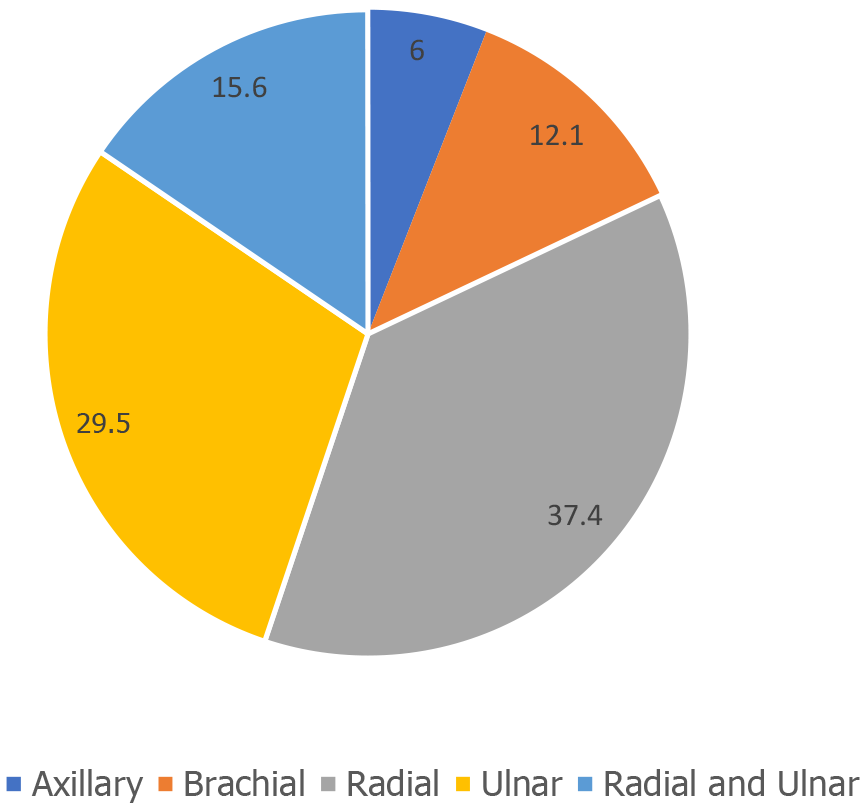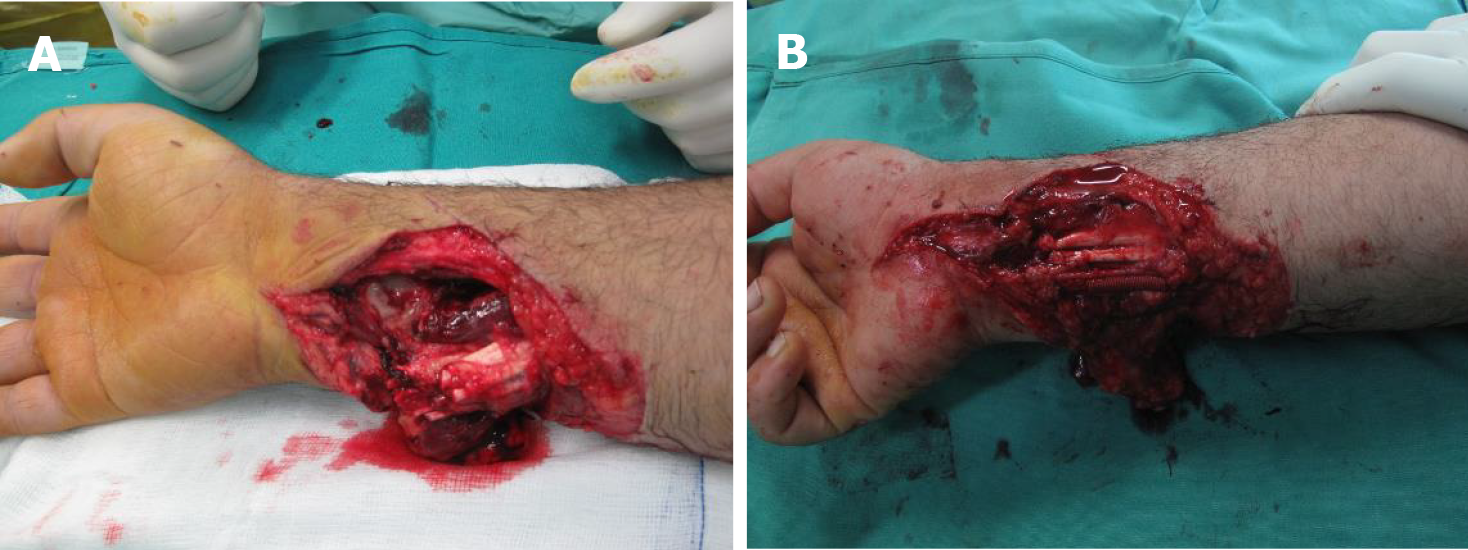Copyright
©The Author(s) 2024.
World J Crit Care Med. Jun 9, 2024; 13(2): 91558
Published online Jun 9, 2024. doi: 10.5492/wjccm.v13.i2.91558
Published online Jun 9, 2024. doi: 10.5492/wjccm.v13.i2.91558
Figure 1 Concommitant injuries (%).
A: Overall; B: Tendons; C: Nerves. FDS: Flexor digitorum superficialis; PL: Palmaris longus; FDP: Flexor digitorum profundus; FCR: Flexor carpi radialis; FCU: Flexor carpi ulnaris.
Figure 2 Types of arterial injuries (%).
Figure 3 Spaghetti wrist type of injury.
A: Spaghetti wrist injury from chainsaw in a 45-years old male patient’s right forearm. Laceration of multiple tendons, median nerve, ulnar neuro-vascular bundle is depicted; B: Layered reconstruction of flexor digitorum profundi tendons, median and ulnar nerves, and ulnar artery.
Figure 4 High energy trauma in the forearm of a 43-years old female patient.
A: Temporary external fixation management of the radius-ulna fractures besides radial artery and flexor tendons repair; B: Ten days post-operative management of the necrotic tissue in the palmar side of the forearm with extensive surgical debridement; C: The use of bone cement loaded with antibiotics.
- Citation: Stefanou N, Mylonas T, Angelis FA, Arnaoutoglou C, Varitimidis SE, Dailiana ZH. Upper extremity vascular injuries: Etiology, management and outcome. World J Crit Care Med 2024; 13(2): 91558
- URL: https://www.wjgnet.com/2220-3141/full/v13/i2/91558.htm
- DOI: https://dx.doi.org/10.5492/wjccm.v13.i2.91558












